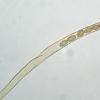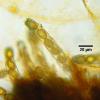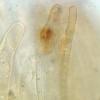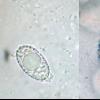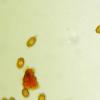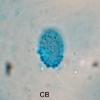
15-12-2025 15:48
 Danny Newman
Danny Newman
Melanospora cf. lagenaria on old, rotting, fallen

15-12-2025 15:54
 Johan Boonefaes
Johan Boonefaes
Unknown anamorph found on the ground in coastal sa

15-12-2025 21:11
 Hardware Tony
Hardware Tony
Small clavate hairs, negative croziers and IKI bb

15-12-2025 07:09
 Danny Newman
Danny Newman
indet. Rutstroemiaceae sp. on unk. fallen leavesMc

15-12-2025 07:05
 Danny Newman
Danny Newman
Pseudosclerococcum golindoi (det: Zotto)near Cosb

15-12-2025 11:49
 Danny Newman
Danny Newman
ITS sequences from the following two collections B

15-12-2025 12:34
 Danny Newman
Danny Newman
indet. Rhytismataceae on oak leafnear Purchase Roa

09-12-2025 12:06
 Andgelo Mombert
Andgelo Mombert
Bonjour,Je recherche l'article concernant Hypobryo
A dark peziza...
Martin Bemmann,
24-09-2010 23:40
 Bonsoir and good evening,
Bonsoir and good evening,I got some collections of pezizas from a friend for determination. I am not very familiar with this genus since my forest is on acid ground (sandstone) and I do find them rarely. But she lives in a calcareous region (close by) and collects them in abundance.
I stuck up with determination right at the first specimen. I went through different keys (Hohmeyer, Nordic Macromycetes) and stranded allways at P. lividula. Which doesn't fit, at least considering shape of spores beeing not fusiform or subf. at all. My problem with those keys is that my specimen doesn't show any milk/latex. They were harvested only few days ago and kept refrigerated.
So here is what I have:
Apothecia are blackish darkbrown with a distinct purple to violaceous tint, up to 4.5 cm in dm.
Asci are IKI+ and c. 375x15.5 µm in size.
Paraphyses are septated and slightly moniliform (are they?) with a medium width of 6.5 µm, with some
yellow-brownish drops in the slightly clavate apical section.
Asci are ovoid with predominantly one oildrop and covered with an even ornamentation of rounded warts (16.6-18.1 x 9-10.5 µm).
What I have seen of the textura of the excipulum was a globulosa.
I will be happy to hear some suggestions. Maybe it is just a trivial one...
Best regards,
Martin
And now some pictures:
René Dougoud,
25-09-2010 07:35
Re:A dark peziza...
Cher Collègue,
Il s'agit très probablement de Peziza depressa Pers.: Fr.
La couleur de l'hyménium est assez type, brun rougeâtre. Sur le frais et les spécimens normalement hydratés, la chair exsude un liquide hyalin, assez abondant. Microscopiquement, les ascospores présentent des verrue arrondies et aussi pointues, avec une grande guttule. Les dimensions données sont correctes pour cette espèce. Le médulla est de texture intricata et l'exc. ectal t. angularis.
Cordialement
René
Il s'agit très probablement de Peziza depressa Pers.: Fr.
La couleur de l'hyménium est assez type, brun rougeâtre. Sur le frais et les spécimens normalement hydratés, la chair exsude un liquide hyalin, assez abondant. Microscopiquement, les ascospores présentent des verrue arrondies et aussi pointues, avec une grande guttule. Les dimensions données sont correctes pour cette espèce. Le médulla est de texture intricata et l'exc. ectal t. angularis.
Cordialement
René
Martin Bemmann,
25-09-2010 16:06

Re:A dark peziza...
Dear René,
thank you very much! This description fits very good to this collection.
Best regards,
Martin
thank you very much! This description fits very good to this collection.
Best regards,
Martin
Martin Bemmann,
26-09-2010 18:03

Re:A dark peziza...
Addendum:
I don't want to blame the keys I used, I have just ignored (not seen) the junction 39d in Hohmeyer's key...
Best regards,
Martin
I don't want to blame the keys I used, I have just ignored (not seen) the junction 39d in Hohmeyer's key...
Best regards,
Martin

